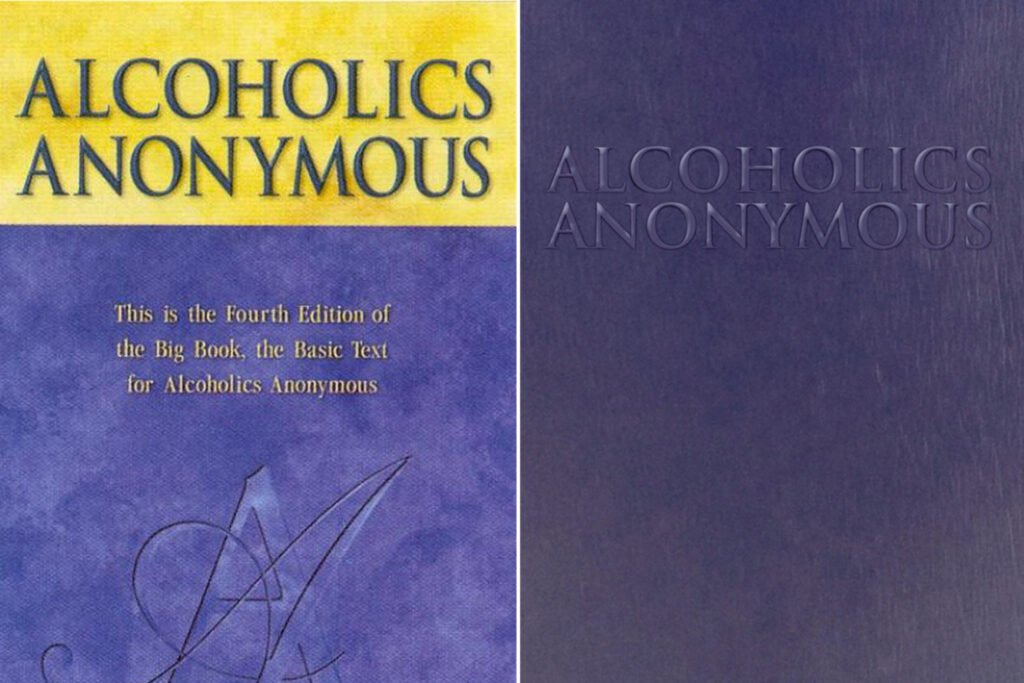The number 12 has served AA and other organizations its members quite well.
What is the 12 & 12 in AA?
The 12 & 12 (12 and 12) refers to combining two lists of 12 items that have shaped the approach, the steps, and the traditions. The 12-steps are a roadmap that facilitates a path to recoveryThe process by which addicts attempt to break the hold a certain substance or behavior has on their lives. This can refer to participation in a wide variety of methods. What they all have in common, is a sense that life is improving and the addict is regaining control. from addiction. Meanwhile, the 12 traditions are the organizational principles by which 12-step groups maintain autonomy while working towards a common goal.
The founders of AA came up with the 12-steps very early on in its history. In 1950, they added the twelve traditions to solidify the organizational principles that allow groups to avoid distractions and help addicts recover.
In 1953 founder Bill W.Bill W., formally known as William Griffith Wilson, is a name that resonates deeply within the realms of addiction recovery and self-help. As one of the co-founders of Alcoholics Anonymous (AA), Bill W.'s life journey and struggles with alcoholism are meticulously detailed in the Big Book of AA, a f... published the book Twelve StepsThe term "12 steps" refers to the core principles of the approach to addiction exemplified by Alcoholics Anonymous and other similar groups. The 12 steps are a set of guidelines designed to help individuals overcome addiction and rebuild their lives. They were created by the founders of Alcoholics A... and Twelve Traditions. It emphasizes the equal importance of both the steps and the traditions. Indeed, the two are inseparable. The steps illuminate the path an individual can take towards recovery. But the completion of that path without the group is impossible, and the group cannot provide that support without the traditions to guide it.
Read the 12 steps & 12 traditions in PDF format at aa.org.
What are the Twelve Steps and Twelve Traditions?
The Twelve Steps
- We admitted we were powerless over alcoholAn organic compound used in many products, most notably intoxicating drinks. Alcohol addiction is known as alcoholism. The first 12-step program was devised to deal with that malady. — that our lives had become unmanageable.
- Came to believe that a Power greater than ourselves could restore us to sanity.
- Made a decision to turn our will and our lives over to the care of God as we understood Him.
- Made a searching and fearless moral inventoryStep 4 recommends the addict conduct “a searching and fearless moral inventory.” This involves coming to terms with the flaws which preceded addiction and those that came as a result of it. of ourselves.
- Admitted to God, to ourselves, and to another human being the exact nature of our wrongs.
- Were entirely ready to have God remove all these defects of character.
- Humbly asked Him to remove our shortcomings.
- Made a list of all persons we had harmed, and became willing to make amends to them all.
- Made direct amends to such people wherever possible, except when to do so would injure them or others.
- Continued to take personal inventory and when we were wrong promptly admitted it.
- Sought through prayer and meditation to improve our conscious contactBuilding a relationship with a Higher Power is a crucial element in recovery. This involves conscious contact with a Higher Power through prayer and meditation regularly. with God as we understood Him, praying only for knowledge of His will for us and the power to carry that out.
- Having had a spiritual awakening as the result of these Steps, we tried to carry this message to alcoholics, and to practice these principles in all our affairs.
The founders of AA, Dr. Bob and Bill W., shared two beliefs on alcoholism and recovery, which have informed all 12-step programs since. They believed that addiction was primarily a spiritual malady rather than a question of willpower or morality. They also thought that the support and fellowshipThis refers to the members of AA and the bonds of support between them. It is this fellowship that allows addicts to share their stories and accept each other in a world that is not always understanding. of other alcoholics was the key to recovery.
The steps are built in careful succession (1-12), with each one building carefully on the previous ones. Some of the steps are more difficult than others. Indeed, some members report that some of the stages are positively painful to complete. However, each serves an essential spiritual purpose, and the whole is worth considerably more than the sum of the steps.
Therefore, the 12-steps focus on ending the cycle of unhealthy selfish and destructive behavior. The process involves surrendering to a Higher Power12-step programs greatly stress surrender to and daily communication with a Higher Power. Having trust in something greater than yourself is considered essential for returning sanity in the unmanageable life of an addict. This can be a traditional deity, a spiritual entity or a social one such as th... and thereby repairing the spiritual life of the addictAn individual with an unhealthy dependence on a substance or behavior. An individual remains an addict even years into recovery and must therefore remain active in recovery. Read more about drug & alcohol addiction & withdrawal at Withdrawal Info.. Though the founders were Christian and the Higher Power they envisioned is God, any spiritual entity which helps us on the road to recovery can be used for this purpose.
Once the Higher Power’s strength reinforces the addicts, they perform a fearless moral inventory and survey all they have done wrong. They also try to understand which failures of character led them to behave that way. During this process, they also confess these wrongs to both their Higher Power and another person. Finally, this part of the process culminates in making amends for the wrongs committed in the throes of addiction and elsewhere.
In the last three steps, members have already made significant progress in coming to terms with their past. They work on bringing recovery and spirituality into their everyday lives. This process culminated with a commitment to serviceAA and other 12-step fellowships do not normally have employees. Instead, members volunteer and take roles necessary for the operation of the different groups and the larger infrastructure of the fellowship. Common roles of service include secretary, treasurer, and chairing meetings. and to helping other addicts in need. As you can see, the 12-step program is a self-contained path to a full spiritual recovery from addiction.
The Twelve Traditions
- Our common welfare should come first; personal recovery depends upon A.A. unity.
- For our group purpose there is but one ultimate authority — a loving God as He may express Himself in our group conscience. Our leaders are but trusted servants; they do not govern.
- The only requirement for A.A. membership is a desire to stop drinking.
- Each group should be autonomous except in matters affecting other groups or A.A. as a whole.
- Each group has but one primary purpose — to carry its message to the alcoholicAn individual with an unhealthy dependence on alcohol. From the perspective of AA, it is an individual who has lost control over their life due to an inability to stop drinking. who still suffers.
- An A.A. group ought never endorse, finance, or lend the A.A. name to any related facility or outside enterprise, lest problems of money, property, and prestige divert us from our primary purpose.
- Every A.A. group ought to be fully self-supporting, declining outside contributions.
- Alcoholics AnonymousThe original 12-step fellowship, formed in 1935, to help alcoholics, regain control over their lives. It remains the largest 12-step organization and has contributed to the sobriety of millions worldwide. Read more about Alcoholics Anonymous should remain forever non-professional, but our service centers may employ special workers.
- A.A., as such, ought never be organized; but we may create service boards or committees directly responsible to those they serve.
- Alcoholics Anonymous has no opinion on outside issues; hence the A.A. name ought never be drawn into public controversy.
- Our public relations policy is based on attraction rather than promotion; we need always maintain personal anonymityAlcoholics Anonymous and all the 12 step groups modeled after it, protect the anonymity of its members. Members are forbidden from disclosing the identity of other addicts to outside sources or identifying themselves with the group on any form of public media. The idea behind this is to focus on the... at the level of press, radio, and films.
- Anonymity is the spiritual foundation of all our traditions, ever reminding us to place principles before personalities.
The 12-step approach to recovery relies heavily on the power of the group. The founders believed that only fellow addicts could help an alcoholic by offering genuine support and fellowship. As Bill W. put it, he designed the rules to help the different groups survive. He explained that “most individuals cannot survive unless there is a group. The group must survive, or the individual will not.”
It became apparent quite early on that if the group plays such an essential role in recovery, it should be protected and regulated. After all, every group can’t just do whatever it is they want. The founders built AA on certain principles, and every group needed to uphold them to combat alcoholism.
However, they were wise enough to realize that regulation had to protect each separate group’s autonomy and independence. While every group needs to follow the same basic principles, there is no substitute for the judgment of the people in the group.
The way AA the founders organized AA was revolutionary. It lacks a governmental hierarchy and relies on traditions instead of explicit and enforceable rules. The traditions have a vital ideological component. They stress the principles of autonomy and service.
However, they are also notably pragmatic. As the organization formed in 1936 grew, the rising popularity brought many unanswered practical issues. The questions of money, independence, and public relations arose quickly as the fellowship grew. With no traditions or rules, each group handled their problems to the best of their abilities. The founders and other members could then see what worked best and base general principles on lessons learned the hard way.
By 1950 when the organization first published the traditions, the founders had a decade and a half of experience in running AA groups. They had experienced a great deal of both failure and success. Therefore, the traditions are not just abstract, idealized versions of how a fellowship should work. Instead, they are hard-won realizations of how a society of alcoholics can grow exponentially without diluting its core principles.
AA has survived this long because it has avoided some of the pitfalls which bring other organizations to their knees. It has limited power-seeking and aggrandizement by limiting hierarchical control. It has avoided divisiveness and outside interference by preventing the groups from championing other causes or taking external money. Strict adherence to the 12 traditionsThe term "12 traditions" refers to a set of principles that guide the functioning and decision-making of 12-step recovery organizations such as Alcoholics Anonymous (AA). The traditions were first published in 1946 and are intended to allow the organizations to run smoothly while protecting the anon... of AA has allowed the various groups to survive and thrive.
If so, the 12 traditions protect and help the group, just as the 12 steps protect and support the individual memberAn individual who attends 12-step program meetings and has the desire to overcome addiction.. Both are intended to serve the higher purpose of the fellowship, to help all addicts in need.
Frequently Asked Questions about the 12 & 12
The twelve traditions were designed to provide guidelines for running the institutions of AA. Different groups have emerged independently over the years. However, they struggled to maintain their coherence and independence. These were designed to support the main goals of the organization and the efficient running of groups. The traditions protected anonymity as a guiding principle of the group. The guidelines also protected the non-profit status of AA. Other 12-step groups have adopted the rules as well.
Bill W., one of the two founders of AA, wrote both the 12-steps and the 12-traditions.His 1953 book Twelve Steps and Twelve Traditions contains the first appearance of the two documents together. While the traditions were new, the 12-steps had already been in practice for some time.
The Twelve Steps and Twelve Traditions book is reasonably easy to find. You can order it from the AA online store for $8.90. It is also readily available, including Kindle and audio versions, on Amazon.
No. AA members are not required to have the 12 & 12. The only formal requirement for membership in AA is a desire to stop drinking. The Twelve Steps and Twelve Traditions book is a handy tool in the process. However, it is not necessary to get started.







